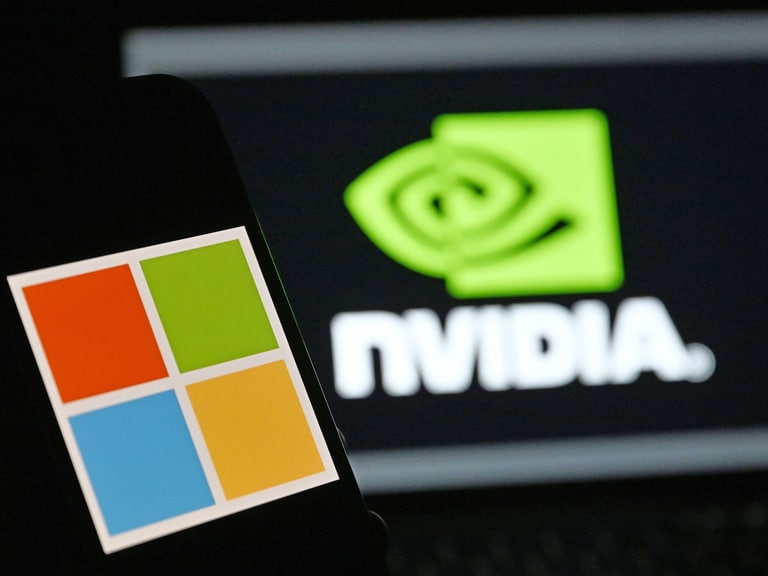Ford [F] and Rivian [RIVN] have shelved plans to work together to jointly develop an electric vehicle (EV). Yet, the Detroit automaker still has ambitions to become the second biggest EV producer in the US. So how does it plan to achieve this?
The decision to mutually split was announced by Ford CEO Jim Farley. “We love their [Rivian’s] future as a company, but at this point, we’re going to develop our own vehicles,” said Farley, adding that Ford likes what Rivian is doing but pairing the two’s different business models would be difficult.
Ford will remain an investor in Rivian. It has been a supporter of the start-up that went public on 9 November with a $500m investment in 2019, later rising to $1.2bn.
The Rivian share price dropped 14% between the news breaking on 19 November and the 2 December close. This move could partly be attributed to the heightened volatility due to the number of retail investors that piled into the stock following its IPO.
In contrast, the Ford share price is flat over the same period. It’s currently trading around its highest levels in 20 years and hit a 52-week high of $20.79 on 22 November. Its recent chart movement, including its gain of 24% in the last month, indicates that the stock has consolidated and could break out.
Ford’s electric vehicle ambitions
Ford set out its EV ambitions as part of its Ford+ plan, unveiled back in May. The automaker intends to accelerate spending on electrification by more than third. It also hopes that 40% of all its vehicles produced will be electric by 2030. In the short-term, the global production goal is 600,000 units annually by the end of 2023.
40%
Share of its fleet Ford intends to be electric by 2030
Announced at the start of the year, the company intends to only offer EVs and plug-in hybrid models in Europe by 2026, with a full transition to battery-powered cars by 2030.
Ford has already inked a deal with SK Innovation, part of South Korean giant SK Group [034730.KRX], to invest a combined $11.4bn in building lithium-ion battery factories – two in Kentucky – as well as an assembly plant for its electric F-Series trucks in Tennessee.
Under the Ford+ plan, the automaker wants to achieve an adjusted profit margin of 8%. The margin for fiscal 2020 was 2.2% and 4.1% in 2019. Due to supply and demand issues with chips, the margin was 13.3% in Q1 2021.
On the Q1 2021 earnings call, Farley said: “In recent years, our financial performance hasn’t been at an acceptable level … We’re running a much tighter ship.”
This should spell good news for investors who will be hoping that Ford can execute on its electrification plans
Ford’s healthy balance sheet
Analyst reaction to Ford’s grand ambitions appears to be lukewarm. Ford currently has 12 ‘buy’ ratings along with four ‘hold’ and three ‘sell’, according to MarketBeat. The consensus of the price targets issued in the last 12 months is $16.26, down from the $19.87 closing price on 2 December.
Jefferies analyst Philipe Houchois wrote in a note to clients seen by CNBC that Ford’s healthy balance sheet should give it the leverage needed to achieve its EV goals.
Houchois has assigned Ford a ‘buy’ rating and has raised his price target from $17 to $20, implying a marginal upside.
The analyst added that the company’s product mix will be key to driving the stock higher, and believes that there’s a gap between the company’s gross margins and the stock’s true value.
“The majority of the [EV] spending burden will occur during 2022 and 2023. This is likely to lead to [year-over-year] structural cost increases for the company, thus pressuring margins” - Nomura analyst Anindya Das, per Barron's
Nomura analyst Anindya Das takes a more cautious view, downgrading the stock from ‘hold’ to ‘sell’ in September. He also lowered his price target ever so slightly, from $13.30 to $13.
“The majority of the [EV] spending burden will occur during 2022 and 2023. This is likely to lead to [year-over-year] structural cost increases for the company, thus pressuring margins,” Das wrote in a note to clients seen by Barron’s.
Zacks data shows analysts are forecasting full-year 2021 earnings per share to be $1.84, which would be a 349% increase on the EPS reported in 2020. Earnings for fiscal 2022 are expected to be $1.91, which would represent a 4% increase if the analyst consensus for 2021 is met.
Disclaimer Past performance is not a reliable indicator of future results.
CMC Markets is an execution-only service provider. The material (whether or not it states any opinions) is for general information purposes only, and does not take into account your personal circumstances or objectives. Nothing in this material is (or should be considered to be) financial, investment or other advice on which reliance should be placed. No opinion given in the material constitutes a recommendation by CMC Markets or the author that any particular investment, security, transaction or investment strategy is suitable for any specific person.
The material has not been prepared in accordance with legal requirements designed to promote the independence of investment research. Although we are not specifically prevented from dealing before providing this material, we do not seek to take advantage of the material prior to its dissemination.
CMC Markets does not endorse or offer opinion on the trading strategies used by the author. Their trading strategies do not guarantee any return and CMC Markets shall not be held responsible for any loss that you may incur, either directly or indirectly, arising from any investment based on any information contained herein.
*Tax treatment depends on individual circumstances and can change or may differ in a jurisdiction other than the UK.
Continue reading for FREE
- Includes free newsletter updates, unsubscribe anytime. Privacy policy





